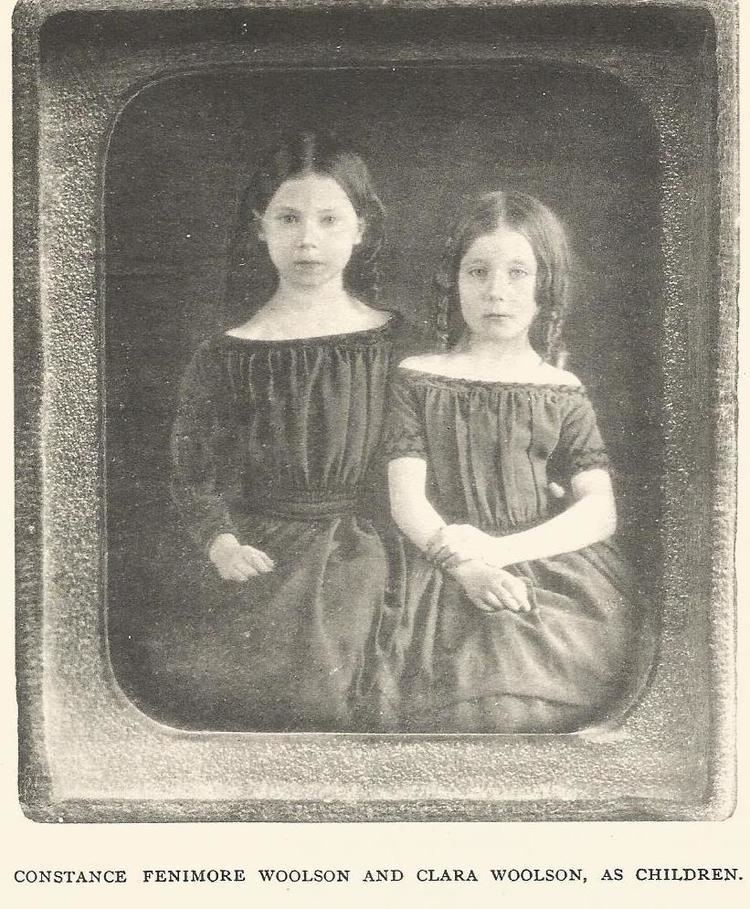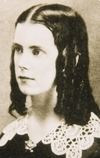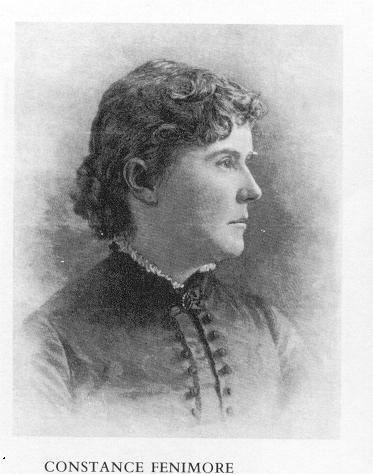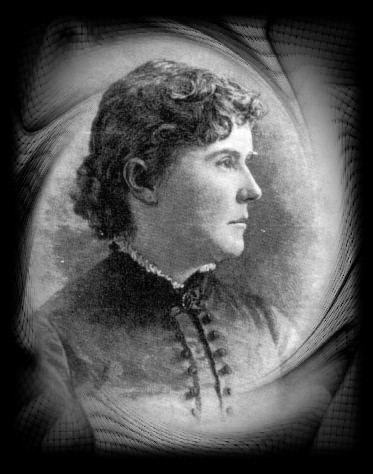Occupation Writer Name Constance Woolson | Role Novelist | |
 | ||
Born March 5, 1840Claremont, New Hampshire ( 1840-03-05 ) Period Late Nineteenth Century: 1870-1894 Genre Novel, short story, poetry, travel narrative Notable works Anne, “Miss Grief,” “Rodman the Keeper” Died January 24, 1894, Venice, Italy Books Rodman the keeper, Castle Nowhere, For the major, East Angels, Jupiter Lights | ||
Preview in conversation anne boyd rioux and sheridan hay on constance fenimore woolson
Constance Fenimore Woolson (March 5, 1840 – January 24, 1894) was an American novelist, poet, and short story writer. She was a grandniece of James Fenimore Cooper, and is best known for fictions about the Great Lakes region, the American South, and American expatriates in Europe.
Contents
- Preview in conversation anne boyd rioux and sheridan hay on constance fenimore woolson
- WhatsHerName Podcast Episode 21 THE LADY NOVELIST Constance Fenimore Woolson
- In America the story writer
- In Europe the novelist
- Works
- Critical reception
- Woolsons friendship with Henry James
- References

What'sHerName Podcast Episode 21: THE LADY NOVELIST Constance Fenimore Woolson
In America: the story-writer

Woolson was born in Claremont, New Hampshire, but her family soon moved to Cleveland, Ohio, after the deaths of three of her sisters from scarlet fever. Woolson was educated at the Cleveland Female Seminary and a boarding school in New York. She traveled extensively through the midwest and northeastern regions of the U.S. during her childhood and young adulthood.

Woolson’s father died in 1869. The following year she began to publish fiction and essays in magazines such as The Atlantic Monthly and Harper's Magazine. Her first full-length publication was a children’s book, The Old Stone House (1873). In 1875 she published her first volume of short stories, Castle Nowhere: Lake-Country Sketches, based on her experiences in the Great Lakes region, especially Mackinac Island.

From 1873 to 1879 Woolson spent winters with her mother in St. Augustine, Florida. During these visits she traveled widely in the South which gave her material for her next collection of short stories, Rodman the Keeper: Southern Sketches (1880). After her mother’s death in 1879, Woolson went to Europe, staying at a succession of hotels in England, France, Italy, Switzerland and Germany.
In Europe: the novelist
Woolson published her first novel Anne in 1880, followed by three others: East Angels (1886), Jupiter Lights (1889) and Horace Chase (1894). In 1883 she published the novella For the Major, a story of the postwar South that has become one of her most respected fictions. In the winter of 1889–1890 she traveled to Egypt and Greece, which resulted in a collection of travel sketches [2], Mentone, Cairo and Corfu (published posthumously in 1896).
In 1893 Woolson rented an elegant apartment on the Grand Canal of Venice. Suffering from influenza and depression, she either jumped or fell to her death from a fourth story window in the apartment in January 1894, surviving for about an hour after the fall.
Two volumes of her short stories appeared after her death: The Front Yard and Other Italian Stories (1895) and Dorothy and Other Italian Stories (1896). She is buried in the Protestant Cemetery in Rome, and is memorialized by Anne's Tablet on Mackinac Island, Michigan.
Works
Selected works of Constance Fenimore Woolson were printed (and reprinted) in several volumes of family biography by Woolson’s niece, Clare Benedict. Five Generations: 1785-1923 is the general title for three volumes published in 1930: Voices Out of the Past (Vol. 1), Constance Fenimore Woolson (Vol. 2), and The Benedicts Abroad (Vol. 3). Benedict then reprinted the second volume of the series, Constance Fenimore Woolson, in 1932 and added selected published and unpublished materials in “Appendix A.” In this reference section, the four volumes Benedict edited are referred to as: Benedict 1, Benedict 2, Benedict 3, Benedict 4 (1932).
Critical reception
Woolson’s short stories have long been regarded as pioneering examples of local color or regionalism. Today, Woolson's novels, short stories, poetry, and travelogues are studied and taught from a range of scholarly and critical perspectives, including feminist, psychoanalytic, gender studies, postcolonial, and new historicism.
In recent decades, critical work on Woolson has blossomed and teaching of Woolson at the high school and university levels has increased. Sharon L. Dean's The Complete Letters of Constance Fenimore Woolson, published in 2012, is a wonderful resource for scholars, while Anne Boyd Rioux's Constance Fenimore Woolson: Portrait of a Lady Novelist, published in 2016, provides the first full-length biography of Woolson. The Constance Fenimore Woolson Society holds regular conferences and hosts panels at the annual meeting of the American Literature Association and the biennial Society for the Study of American Women Writers conference.
Woolson's friendship with Henry James
The relationship between the two writers has prompted much speculation by biographers, especially Lyndall Gordon in her 1998 book, A Private Life of Henry James. Woolson’s most famous story, Miss Grief, has been read as a fictionalization of their friendship, though she had not yet met James when she wrote it. Recent novels such as Emma Tennant's Felony (2002), David Lodge's Author, Author (2004), Colm Toibin's The Master (2004), and Elizabeth Maguire's The Open Door (2008) have treated the still unclear relationship between Woolson and James.
